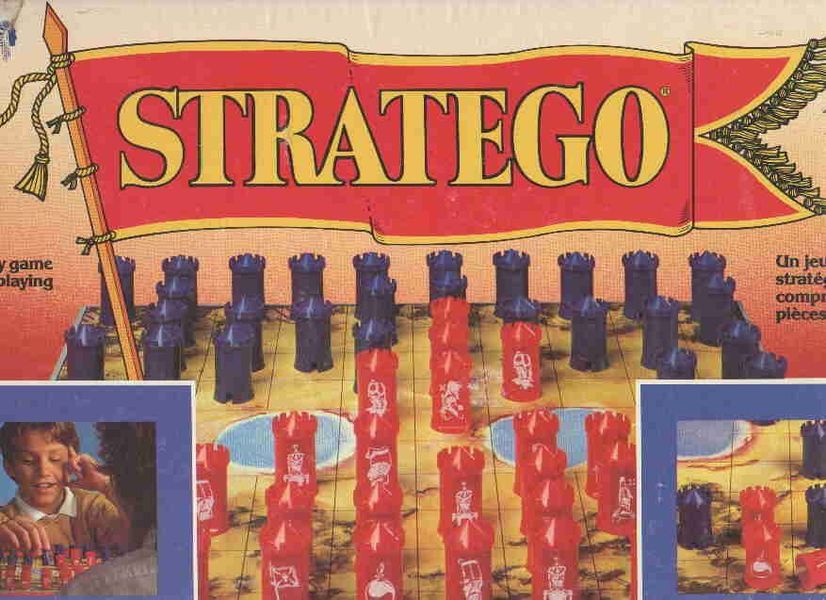Stratego (1946) Board Game
Stratego is a classic board game that was first released in 1946 by designer Jacques Johan Mogendorff. The game is set in a Napoleonic war theme, where players command armies to defeat their opponents. It involves strategic planning, bluffing, deduction, and memory skills. Over the years, it has become a popular choice for those who enjoy abstract strategy games with a historical twist.
Game Components of Stratego
How To Setup Stratego
Players start by secretly placing their pieces on the first four rows of their side of the board. Each player knows the ranks of their own pieces but not those of their opponent. The setup phase is crucial as it sets the stage for the entire game, requiring players to balance defense and offense.
Gameplay Mechanics and Game Objective
– Players take turns moving one piece at a time orthogonally (except Scouts).
– When a piece attacks an enemy piece, both players reveal the ranks of the involved pieces.
– The less powerful piece is captured and removed from the game; equal ranks result in both pieces being captured.
– Bombs capture any piece that attacks them except the Miner.
Player Experience
Playing *Stratego* is a journey of strategic planning, psychological guessing, and tactical execution. The game begins with a sense of uncertainty, as players have no knowledge of their opponent’s piece placement. As the game progresses, players build a mental map of their opponent’s tactics and layout, adding a layer of tension and excitement. The simplicity of the rules contrasts with the depth of strategy required, making it accessible yet challenging.
Pros
Cons
Personal Thoughts on Stratego
*Stratego* is for anyone who enjoys strategic abstract games with a strong tactical element. It is particularly appealing to those who value the simplicity of rules combined with the complexity of strategy. While it may not fit into the category of modern, heavily themed board games, it holds a special place in the hearts of many due to its unique blend of uncertainty and tactical nuance. If you enjoy games that challenge your mind and offer high replayability, *Stratego* is an excellent choice. However, if you prefer games with rich themes or more complex rule sets, you might find *Stratego* a bit dated.
We are supported by our audience. When you purchase through links on our site, we may earn an affiliate commission, at no extra cost for you. Learn more.

